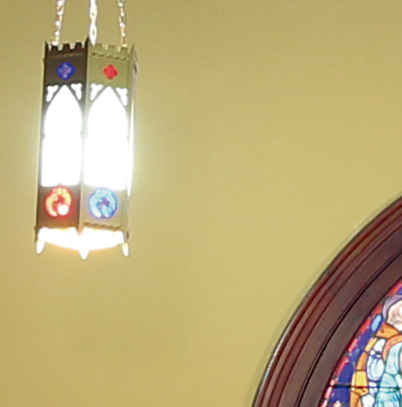ISO speed controls how sensitive the camera's sensor is to the light that reaches it. A higher ISO setting makes your camera sensor more sensitive to light, allowing you to capture shots in a dark place. It can also influence the shutter speed and aperture speed setting. Read on to find out more about how it affects your shots. (Reported by: Ryosuke Takahashi)

What is ISO speed?
The “ISO” in “ISO speed” stands for "International Organisation for Standardisation," a body that determines international standards.
“ISO speed” is a widely-used photography term.
On film cameras, it indicated the sensitivity of the photographic film to light.
In digital photography, it indicates the sensitivity of the CMOS sensor toward light.
A higher ISO speed indicates higher sensitivity to light. This helps when you are shooting in low-light conditions, as it lets you capture the environment around a subject without having to use a flash. This is ideal for situations such as if you are shooting indoors where flash photography is not allowed.
If you used a low ISO speed, you would have to use a flash to get the same results.
We have learned in the previous lesson that we can control the depth of field (amount of bokeh) with aperture, and the movement of subjects with shutter speed. These combine with the ISO speed to determine the exposure (amount of light) of an image. Understanding how they work will help you achieve better photos.
The relationship between ISO speed & exposure

Example of a high ISO speed shot

f/5.6
Manual exposure (1/800 sec., f/4)/ ISO 6400
In this example, the movement of the performer is "frozen" with the use of a fast shutter speed. I did not fire the flash to prevent it from affecting the ambience of the resulting photo. This is a typical low-light scene that can be captured using a high ISO speed.
Example of a low ISO speed shot

Aperture-priority AE (25 sec., f/25)/ ISO 100
In this example, I chose a low ISO speed. This, together with the use of a narrower aperture, enabled me to achieve a slower shutter speed. A slow shutter speed blurs the light from the headlight and taillight of the cars, forming light trails.
Increase ISO speed to use a faster shutter speed
In dimly-lit conditions, raising the ISO speed allows more light to reach the camera sensor, allowing you to produce clearer photos.
In bright conditions, a higher ISO speed enables the image sensor to capture a large amount of light in a short period of time. This allows you to utilise a faster shutter speed than that in a low ISO speed setting. In sports photography, it is common to use an ISO speed as fast as ISO 400 when shooting in the day.
ISO 200, 1/50 second

ISO 800, 1/200 second

In the shot with the faster shutter speed of 1/200 second, I was able to "freeze" the instant the subject jumped. An ISO-speed stop corresponds to a shutter-speed stop.
Read this article for more information about the benefits and drawbacks of low and high ISO speeds:
Camera FAQ #3: How do I use the expanded ISO speeds on my camera?
Noise and ISO speed
What is noise?
Noise refers to the spots that appear on an image captured at a high ISO speed. There is a need to amplify the electrical signals in order to raise the ISO speed, and noise signals are generated during the process. Noise is an inherent characteristic of digital cameras, and the acceptable degree varies across individuals.
Effect of noise on ISO speed

ISO 100

ISO 400

ISO 1600

ISO 25600
How your EOS camera reduces noise
Shots taken at a high ISO speed are more prone to noise. On cameras in the EOS series, key technologies work to reduce noise at high ISO speeds as much as possible.
The CMOS image sensor is capable of reducing noise efficiently.
Meanwhile, the DIGIC image processor works to eliminate any noise that is capture in the data from the sensor. For example, for models that come with DIGIC 7, no noticeable noise is observed up to about ISO 6400, and even shots taken at ISO 25600 can be used for printing 3R size photo prints.
Cameras released in 2012 or later are built in with a "Multi Shot Noise Reduction feature, which takes four consecutive shots with every press of the shutter, and merges them automatically to eliminate noise.
Photos using Multi Shot Noise Reduction

Even when the shot is taken at a high ISO speed of 12800, noise is reduced significantly with the Multi Shot Noise Reduction feature.
For more about key camera concepts, check out our Camera Basics series at:
In Focus: Camera Basics
Receive the latest update on photography news, tips and tricks.
Be part of the SNAPSHOT Community.
Sign Up Now!
About the Author
Born in Aichi in 1960, Takahashi started his freelance career in 1987 after working with an advertising photo studio and a publishing house. Besides photographing for advertisements and magazines in and out of Japan, he has also been a reviewer for “Digital Camera Magazine” since the launch of the publication as well as published a number of works. In his product and lens reviews, Takahashi particularly advocates photography techniques that bring out the lens performance through his unique point of view and tests. Takahashi is a member of the Japan Professional Photographers Society (JPS).

































